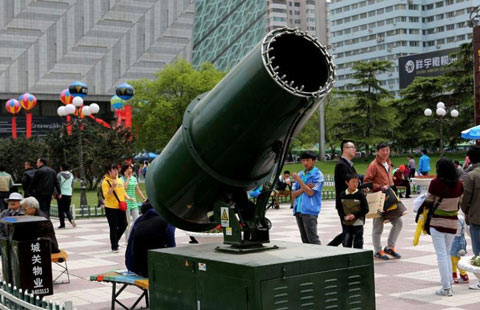New indicator to better reflect labor market
By Zhou Feng (chinadaily.com.cn) Updated: 2014-05-05 18:20For many years, China has used the registered unemployment rate to monitor its labor market. But a recent development has shown that the country is working toward using a new indicator, the surveyed jobless rate, to replace it.
The National Development and Reform Commission, the country's major economic policy maker, announced last month that China's surveyed unemployment rate stood at 5.17 percent at the end of March. It also said the figure dropped a little bit from a month ago.
This is the second time the indicator, which is commonly used internationally, was made public.
In August last year, the NDRC said in a statement on its website that China's surveyed unemployment rate was 5 percent in the first half of last year. The indicator becomes known by more people after Premier Li Keqiang, a month later, cited it in his article published on the Financial Times before his visit to Europe.
Not much information has been released about the indicator, but it has been made clear that the index covers 31 large and medium-sized cities and is updated monthly.
Actually, statistics agency has been compiling the indicator since the 1990s as a reference for policymakers. It seems that the way to compile the indictor has been improving through years.
Now that the NDRC is willing to make it public, the day is near that the surveyed rate will replace the registered rate to become the major gauge of the job market.
This change shows that top policymakers pay a lot of attention to employment and are keen to see the real picture of the market.
The registered figure often does not reflect the real picture. The inaccuracy can be seen by its little fluctuation. The index always stood at around 4 percent, betraying how people feel about the job market. Even in 2009, a year when massive layouts were common, the rate stood at only 4.3 percent.
The surveyed rate, which polls residents instead of passively waiting for the unemployed people to register, can produce a much more reliable figure about how many people are jobless. This is indeed an improvement.
However, there is still a lot to be done to improve the methodology of the indicator.
For example, rural population is not included; migrant workers are not covered; and mostly likely fresh graduates are not on the survey list either. In this sense, the surveyed rate only shows the tip of an iceberg. In addition, the figure, which is supposed to monitor urban employment, cannot fully tell the situation in cities. This is because its survey base is now limited to 31 large and medium-sized cities. Smaller cities, where unemployment rate could be higher due to fewer job opportunities and larger number of unskilled urban population, should also be included.
The author is a Shanghai-based financial analyst.
- Reform orders, labor market flexibility important
- Report: More flexibility needed in labor market
- Economic slowdown cools labor market
- Bernanke hints moves to aid labor market
- Women could supply needed talent to labor market
- 100,000 fresh grads to put pressure on labor market
- Recent developments in labor market
- China National Nuclear Power plans $2.6b share sale in IPO
- Honda to double number of models in China
- Trade deals fall at export fair
- Hello Kitty, happy 40th birthday!
- LVMH enters China's restaurant business
- China facing long way from world's No 1 economy
- Holiday sees fewer Chinese go to Malaysia
- Deal signed to upgrade roads, grid in Ethiopia
















